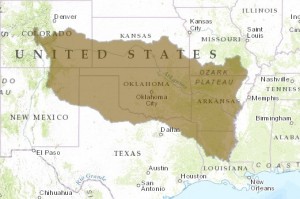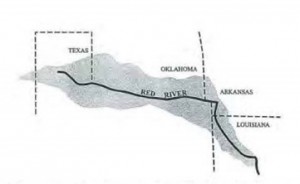August 2013, Vol. 68 No. 8
Newsline
Supreme Court sides with Oklahoma in Tarrant v. Herrmann

The U.S. Supreme Court on June 13 unanimously sided with Oklahoma in Tarrant Regional Water District v. Herrmann litigation, ending a long court battle over water in the Red River basin.
The decision hinged on three parts, and Justice Sonia Sotomayor, who wrote the opinion for the court, state that the decision hinged on three key elements:
• “The well-established principle that States do not easily cede their sovereign powers”;
• “The fact that other interstate water compacts have treated cross-border rights explicitly”; and
• “The parties’ course of dealing.”
At the center of the debate is the Red River Compact which is a long-standing agreement among Oklahoma, Texas, Arkansas and Louisiana that apportions the states’ water rights from the Red River and its tributaries. TRW authorities believed Oklahoma has denied them access to certain rights under the compact. Oklahoma officials countered that they had responsibility to protect Oklahoma’s water supply for the future under the parameters of the Red River Compact.

Oklahoma, Texas, Arkansas and Louisiana have been discussing what to do about water for more than 50 years. In 1955, Congress authorized the four states to draft a compact to assure adequate access to water in the Red River Basin. The compact was signed by the states in 1978, and was ratified by Congress in 1980.
The Red River Compact ensures that each state gets an “equitable apportionment of water” from the Red River and its tributaries.
But “equitable” is arguable. Oklahoma and TRW have disagreed about the language of the Red River Compact for more than a decade. That fight has only grown more intense as a devastating drought set in on both sides of the border in the past couple of years.
Arguments
In 2007, Tarrant sought to appropriate water from three locations in Oklahoma for use in Texas and applied to the Oklahoma Water Resources Board (OWRB), which was established to regulate in-state and out-of-state water usage. On Nov. 1, 2007, Tarrant sued the OWRB and sought declaratory and injunctive relief against the Oklahoma statutes on water usage. Tarrant argued that the statutes placed burdens on interstate water commerce that are unconstitutional under the Commerce Clause and overstep the bounds of the Compact that Congress allowed the states to establish. OWRB moved for summary judgment, and the district court granted it. The U.S. Court of Appeals for the Tenth Circuit affirmed.
Oklahoma Gov. Mary Fallin and J.D. Strong, executive director of the Oklahoma Water Resources Board, praised the decision to uphold Oklahoma’s standing: “After many years of legal maneuvering and saber-rattling, this should end, once and for all, Tarrant’s attempts to circumvent Oklahoma’s water management authority,” Strong said in a statement, adding that the decision was a big win outside of Oklahoma, too. “It’s also a victory for the seven mostly arid western states that sided with Oklahoma and stood to lose at least as much control over their limited surface water supplies.”
Officials at the Tarrant Regional Water District were disappointed by the high court’s decision, general manager Jim Oliver wrote in a statement to StateImpact, a reporting project of local public media and NPR.
“Securing additional water resources is essential to North Texas’ continued growth and prosperity and will remain one of our top priorities. The population in our service area is expected to double over the next 50 years so we will act quickly to develop new sources. The decision does not address the problem of Oklahoma’s lack of water infrastructure, and we believe solutions that benefit both Texas and Oklahoma still exist. We will continue to explore and advance those opportunities.”




Comments